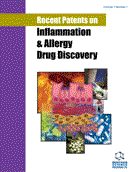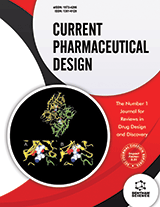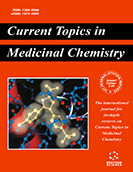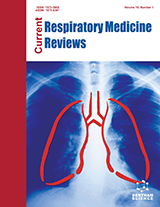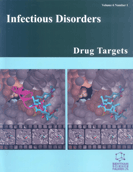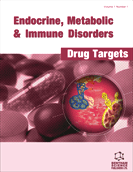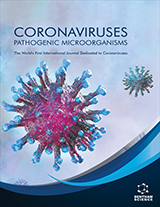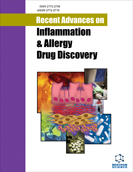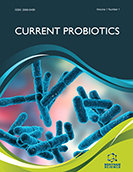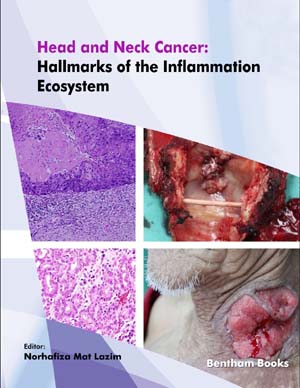Abstract
Chronic Rhinosinusitis (CRS), one of the commonest chronic inflammatory disorders, is encountered daily in all healthcare settings. In its refractory form, CRS seems to prevail over most up-to-date surgical interventions and systemic medical remedies, owing to our poor understanding of its perplexing pathophysiology. Although several systemic influences impinge on the progression of inflammation, the true interplay between offensive and defensive factors takes place on-site, i.e. across the sinonasal epithelial coating. Therefore, current treatment strategies shift the weight of CRS management toward topical modalities, which combine the benefits of surgical approach with the healing effect of conventional medications. An explosive emergence of relevant patents is still in progress, emphasizing the need for classification and comparison. Novel delivery methods of medications into the sinus cavities include modifications of traditional rinses, state-of-the-art nebulizing devices, and the revolutionary concept of sustained drug application utilizing carrier gels or nasal implants. As far as the introduction of new medications is concerned, recent patents propose alterations to the physical and chemical properties of irrigating solutions, as well as the local use of antiseptics, hydragogues, and anti-biofilm agents. This review focuses on the local pathophysiologic events of CRS and the most exciting innovations regarding its topical management.
Keywords: Antimicrobials, biofilms, corticosteroids, patents, refractory chronic rhinosinusitis, rhinotopic therapy.
Recent Patents on Inflammation & Allergy Drug Discovery
Title:Patents and Recent Innovations in Topical Membrane Therapy of Refractory Rhinosinusitis
Volume: 9 Issue: 2
Author(s): Alan H. Shikani and Konstantinos G. Kourelis
Affiliation:
Keywords: Antimicrobials, biofilms, corticosteroids, patents, refractory chronic rhinosinusitis, rhinotopic therapy.
Abstract: Chronic Rhinosinusitis (CRS), one of the commonest chronic inflammatory disorders, is encountered daily in all healthcare settings. In its refractory form, CRS seems to prevail over most up-to-date surgical interventions and systemic medical remedies, owing to our poor understanding of its perplexing pathophysiology. Although several systemic influences impinge on the progression of inflammation, the true interplay between offensive and defensive factors takes place on-site, i.e. across the sinonasal epithelial coating. Therefore, current treatment strategies shift the weight of CRS management toward topical modalities, which combine the benefits of surgical approach with the healing effect of conventional medications. An explosive emergence of relevant patents is still in progress, emphasizing the need for classification and comparison. Novel delivery methods of medications into the sinus cavities include modifications of traditional rinses, state-of-the-art nebulizing devices, and the revolutionary concept of sustained drug application utilizing carrier gels or nasal implants. As far as the introduction of new medications is concerned, recent patents propose alterations to the physical and chemical properties of irrigating solutions, as well as the local use of antiseptics, hydragogues, and anti-biofilm agents. This review focuses on the local pathophysiologic events of CRS and the most exciting innovations regarding its topical management.
Export Options
About this article
Cite this article as:
Shikani H. Alan and Kourelis G. Konstantinos, Patents and Recent Innovations in Topical Membrane Therapy of Refractory Rhinosinusitis, Recent Patents on Inflammation & Allergy Drug Discovery 2015; 9 (2) . https://dx.doi.org/10.2174/1872213X09666150531174219
| DOI https://dx.doi.org/10.2174/1872213X09666150531174219 |
Print ISSN 1872-213X |
| Publisher Name Bentham Science Publisher |
Online ISSN 2212-2710 |
 26
26 3
3Related Articles
-
Phosphorylated and O-GlcNAc Modified IRS-1 (Ser1101) and -2 (Ser1149) Contribute to Human Diabetes Type II
Protein & Peptide Letters Membrane Transporters and Antifungal Drug Resistance
Current Drug Targets New Insights on the Possible Role of Mast Cells in Aspirin-Induced Asthma
Current Molecular Pharmacology The Endocannabinoid System and Schizophrenia: Integration of Evidence
Current Pharmaceutical Design NLRP3 Inflammasome Activation Leads to Epileptic Neuronal Apoptosis
Current Neurovascular Research Pharmacologic Strategies for Suppression of Lipid Peroxidation in Neurodegeneration
Current Neuropharmacology RING-, HECT-, and RBR-type E3 Ubiquitin Ligases: Involvement in Human Cancer
Current Cancer Drug Targets Concentration-Dependent Mechanisms of Adverse Drug Reactions in Epilepsy
Current Pharmaceutical Design Inhibitors of the Microsomal Prostaglandin E2 Synthase-1 as Alternative to Non Steroidal Anti-Inflammatory Drugs (NSAIDs) – A Critical Review
Current Medicinal Chemistry Molecular Mechanisms of Pancreatic Cancer Dissemination: The Role of the Chemokine System
Current Pharmaceutical Design Anti-inflammatory Effects of Rosuvastatin in Healthy Subjects: A Prospective Longitudinal Study
Current Pharmaceutical Design Modified LDL Particles Activate Inflammatory Pathways in Monocyte-derived Macrophages: Transcriptome Analysis
Current Pharmaceutical Design Retinoids as Therapeutic Agents: Today and Tomorrow
Mini-Reviews in Medicinal Chemistry The Emerging Role of Endocrine Disruptors in Pathogenesis of Insulin Resistance: A Concept Implicating Nonalcoholic Fatty Liver Disease
Current Molecular Medicine Clinical Update on the Use of Immuno Modulators (antiCD3, GAD, Diapep277, Anti-IL1) in Type 1 Diabetes
Current Pharmaceutical Design An Update of Immunotherapy for Specific Allergies
Current Drug Targets - Inflammation & Allergy The Importance of Growth Hormone (GH) and GH Secretagogues for Bone Mass and Density
Current Pharmaceutical Design Computational Drug Repositioning for Cancer Therapeutics
Current Topics in Medicinal Chemistry Pharma-metabolomics in Neonatology: is it a Dream or a Fact?
Current Pharmaceutical Design Drugs for AIDS
Mini-Reviews in Medicinal Chemistry


